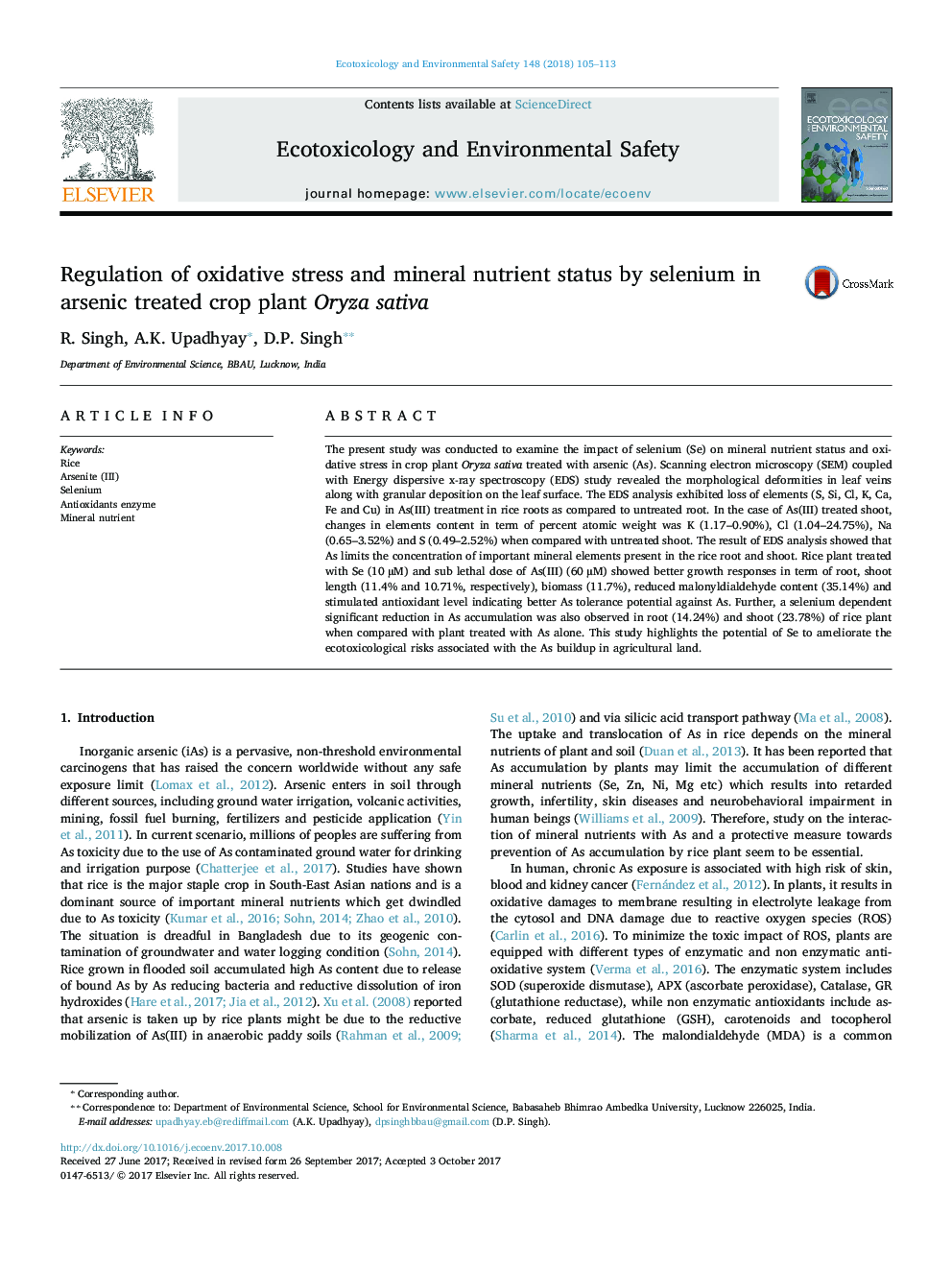| Article ID | Journal | Published Year | Pages | File Type |
|---|---|---|---|---|
| 8854791 | Ecotoxicology and Environmental Safety | 2018 | 9 Pages |
Abstract
The present study was conducted to examine the impact of selenium (Se) on mineral nutrient status and oxidative stress in crop plant Oryza sativa treated with arsenic (As). Scanning electron microscopy (SEM) coupled with Energy dispersive x-ray spectroscopy (EDS) study revealed the morphological deformities in leaf veins along with granular deposition on the leaf surface. The EDS analysis exhibited loss of elements (S, Si, Cl, K, Ca, Fe and Cu) in As(III) treatment in rice roots as compared to untreated root. In the case of As(III) treated shoot, changes in elements content in term of percent atomic weight was K (1.17-0.90%), Cl (1.04-24.75%), Na (0.65-3.52%) and S (0.49-2.52%) when compared with untreated shoot. The result of EDS analysis showed that As limits the concentration of important mineral elements present in the rice root and shoot. Rice plant treated with Se (10 µM) and sub lethal dose of As(III) (60 µM) showed better growth responses in term of root, shoot length (11.4% and 10.71%, respectively), biomass (11.7%), reduced malonyldialdehyde content (35.14%) and stimulated antioxidant level indicating better As tolerance potential against As. Further, a selenium dependent significant reduction in As accumulation was also observed in root (14.24%) and shoot (23.78%) of rice plant when compared with plant treated with As alone. This study highlights the potential of Se to ameliorate the ecotoxicological risks associated with the As buildup in agricultural land.
Keywords
Related Topics
Life Sciences
Environmental Science
Environmental Chemistry
Authors
R. Singh, A.K. Upadhyay, D.P. Singh,
